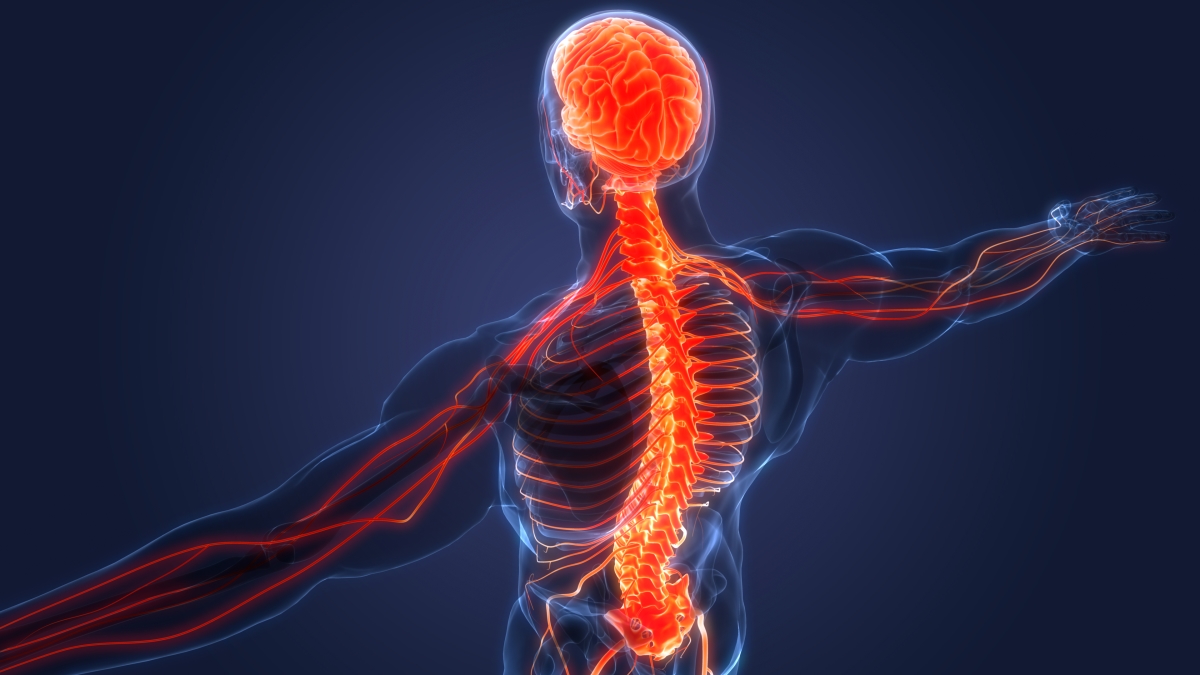Glutamate is the most abundant neurotransmitter in your brain. It’s critical for many cognitive processes like learning and memory, among other functions.
Neurotransmitters are molecules that help transmit nerve signals between nerve cells. There are 3 basic types of neurotransmitters which do exactly as their names suggest:
- Excitatory – excite the neurons and set off a positive reaction such as muscle stimulation.
- Inhibitory – inhibit nerve responses or reduce the intensity of nerve signals in the receiving neurons.
- Modulatory – these can have different effects on different neurons, depending the context
Glutamate is the main excitatory neurotransmitter. You have numerous glutamate receptors throughout your brain and spinal cord.
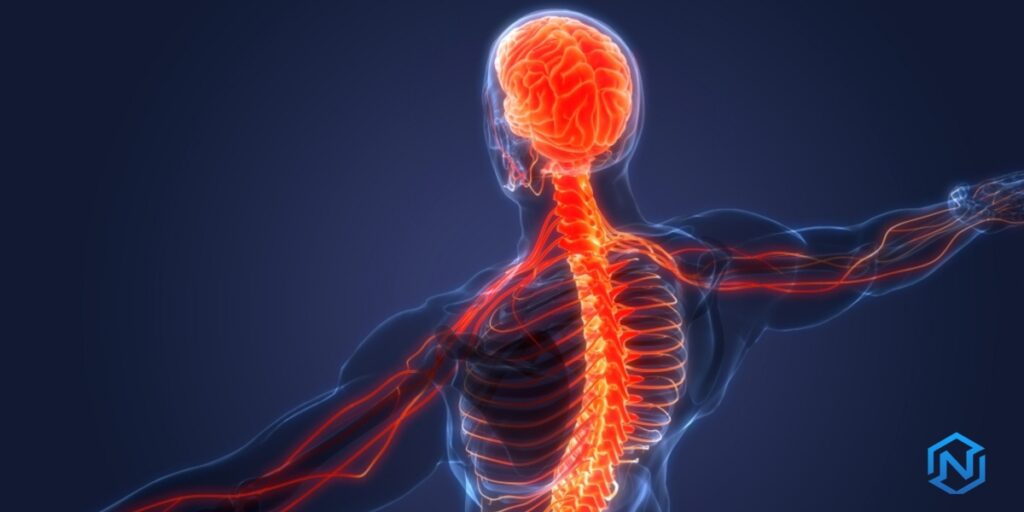
Even though glutamate is essential, too much of it can jam neuronal functions, killing neurons and causing brain fog. Therefore, to optimize your brain function and health, you want to have just the right levels of glutamate in the right brain regions. Too low and your brain won’t function right. Too high and your neurons die. In fact, excess glutamate in the wrong brain regions contributes to many cognitive, psychiatric, and neurological disorders.
There are many ways to optimize brain glutamate levels naturally. If you are using nootropics or want to start, it is vital to learn about glutamate, its benefits, and its negative effects.
More information about factors and symptoms of glutamate imbalance and how to optimize glutamate levels can be found in parts 2 and 3 of this article.
What is glutamate?
Glutamate is an amino acid which also works as a neurotransmitter in your brain. The neurons that release glutamate are called glutamatergic neurons and the neuronal pathways that rely on glutamate are called glutamatergic pathways.
Both nerve cells and glial cells (non-nerve housekeeping cells in the brain) work together to maintain healthy brain glutamate levels in the right brain regions.
One of the ways your brain ensures that glutamate functions right is by having the right glutamate receptors. This is also why nootropics work by targeting one receptor type but not the others, so we will cover different glutamate receptors and what they do.
Glutamate receptors
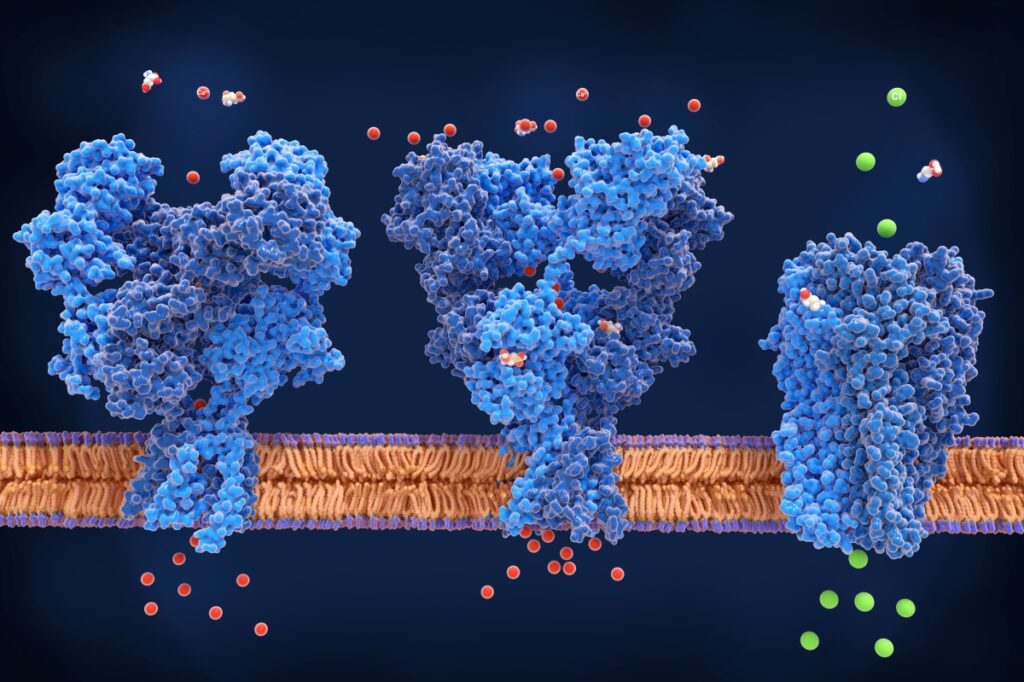
There is a lot of glutamate in the brain, so aside from putting glutamate in the right compartments, your brain also needs to correctly route the nerve signals. Different glutamate receptors make it possible to achieve this. There are two families of glutamate receptors: ionotropic and metabotropic.
- Ionotropic receptors open a channel into the nerve cell once glutamate binds to them. The open channel then allows ions to flow in, which either strengthens or weakens the electrical nerve impulses in the receiving neurons. These include NMDA, AMPA, and Kainate receptors.
- Metabotropic receptors signal through other pathways to increase the electrical impulses inside the receiving neurons. These include mGluR receptors.
NMDA
N-methyl-D-aspartate (NMDA) – is an ionotropic receptor that plays an important role in memory and learning. Glutamate causes excitatory activity through NMDA. Abnormal levels of NMDA receptor activation can lead to cell death, neuronal dysfunction, and problems with learning and memory.
You may have excess NMDA receptor activation when overwhelming amounts of information can make it harder to learn. Increasing the activation of NMDA receptors by increasing glutamate in the right brain regions can improve memory and learning.
AMPA
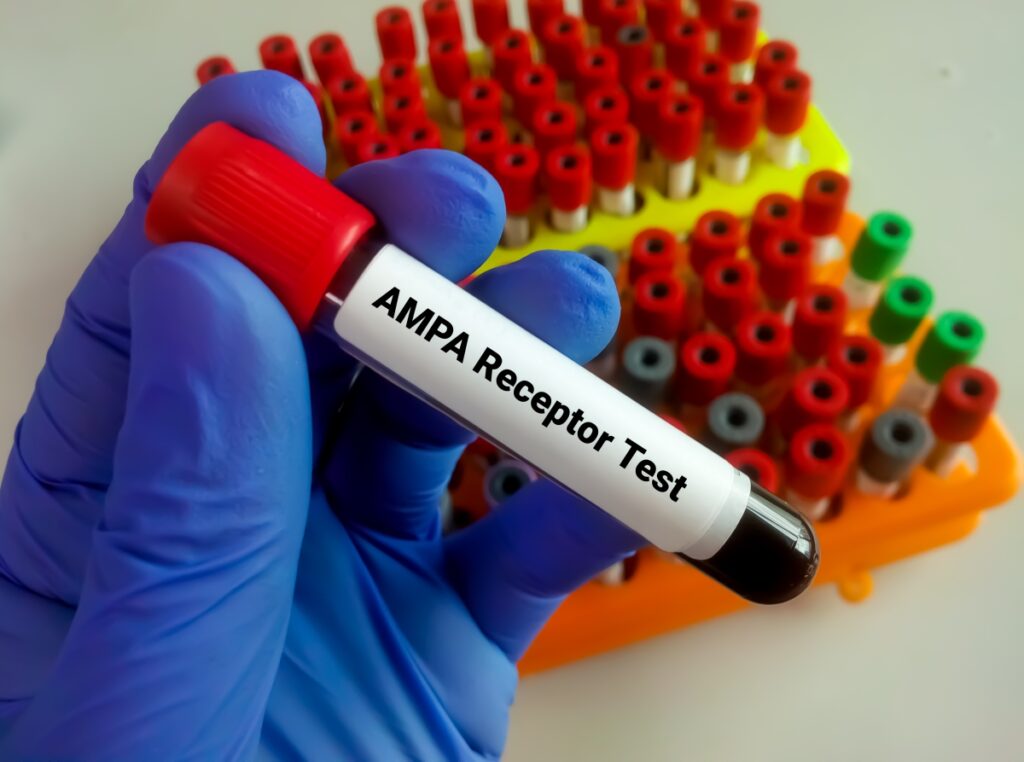
α-Amino-3-hydroxy-5-methyl-4-isoxazolepropionic acid (AMPA) receptors consist of different subunits. AMPA receptors are responsible for brain plasticity, learning, and certain neurological diseases.
AMPA receptors improve learning and memory differently than NMDA. The increase of AMPA ion channel receptors in the membrane stimulates better cognitive functions.
Low AMPA receptors are associated with learning impairment and the inability to remember new information. Increasing AMPA receptors in the postsynaptic membrane increases cognitive abilities.
Kainate
Kainate receptors are the “bad” ionotropic glutamate receptors you don’t want to activate. To maximize your learning and memory, you want to inhibit kainate receptors and tune up the other ionotropic receptors.
Kainic acid activates kainate receptors. It is a strong excitatory amino acid neurotransmitter that activates glutamate receptors. Unlike NMDA and AMPA receptors, kainate receptors are activated both in the receiving and transmitting neurons (both pre and post synapses). The kainate receptors also play a role in synaptic plasticity and induction of NMDA and AMPA receptors.
Although kainate receptors are found throughout the brain, it’s important for programming the amygdala, your memory center. Your amygdala is responsible for emotional behaviour, memory, and autonomic function, especially in the context of fear and traumas. However, certain amounts of these receptors have to be activated to initiate the amygdala’s activity.
Furthermore, kainate activation may contribute to some neurological disorders such as :
- Epilepsy
- Depression
- Bipolar disorder
- Autism
- Huntington’s disease
- Schizophrenia
Therefore, it is better to keep your kainate activation low to maximize memory, learning, and overall neurologic health. Instead, you want to focus on activating NMDA and AMPA receptors.
mGluR
Metabotropic glutamate receptors are divided into different groups based on their similarity. The mGluR receptor is the one most extensively studied.
mGluR controls glutamate activity by G-protein cell signaling. These receptors play a role in brain plasticity and help in treating several neurological disorders.
Furthermore, high production of these receptors aids in memory and learning (which is of concern to us), while low levels can result in depression. High levels of glutamate are needed to activate these receptors.
Important roles of glutamate for cognitive performance
Here are how glutamate plays a role in each of these crucial brain processes:
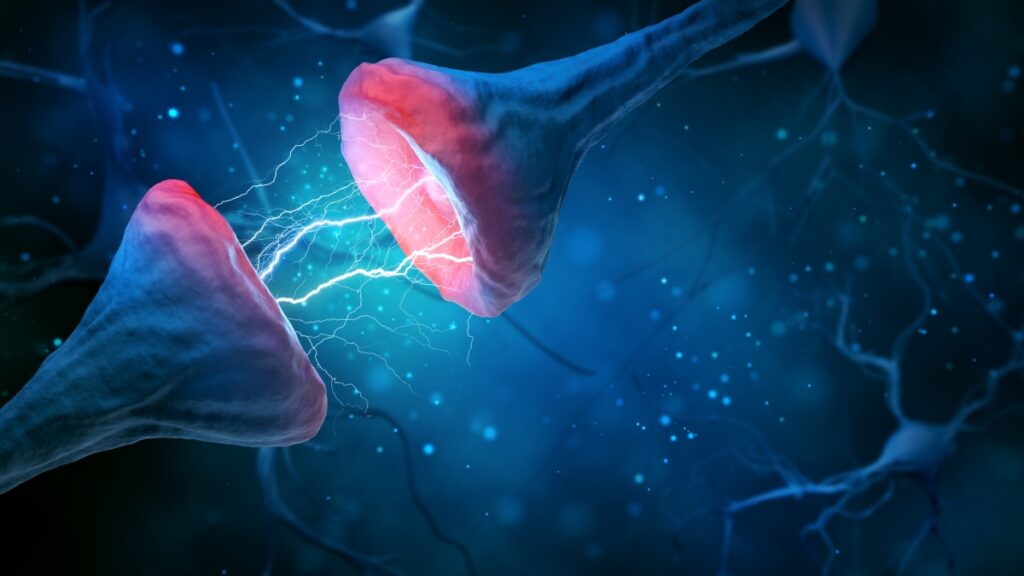
Synaptic plasticity
Synapses are the connections between nerve cells in the brain. These connections are not static but can change, i.e., they are “plastic”. Synaptic plasticity refers to the strengthening or weakening of synapses when we learn or unlearn something. It is a well-known phenomenon that the brain physically changes when we read, learn, or memorize certain information.
The saying, “Neurons that fire together wire together” perfectly explains this. When two nerve cells are activated together constantly, they make stronger connections.
Memory
Glutamate also plays a vital role in memory formation and other cognitive functions. Memory is such a broad and fascinating concept that sometimes learning about its processes can feel like you are watching the movie Inception, where you start to question what’s real and what isn’t.
When you think of a thought or idea, your nerve cells fire in neural circuits. Once you repeat the thought, the connections between these circuits become stronger, allowing memory to form.
This is where glutamate steps in because it helps strengthen the connections between these neurons, enhancing the process of memory formation and retrieval. So, the next time you try to remember something, keep in mind that glutamate is working hard to help you out.
Long-term potentiation
As the name might indicate, long-term potentiation refers to when two neurons strengthen their connections based on frequent stimulation.
“Practise makes perfect” rings very true in the case of long-term potentiation between neurons. Similarly to what was mentioned in synaptic plasticity, when the brain is used to actively retrieve information, neurons light up and form more connections. So, the more we use our neurons, the stronger the connections between them become.
NMDA is a glutamate receptor which plays a key role in memory formation. Studies that have been done on rats have shown that NMDA is present when long-term potentiation is being formed.
Cognitive functions: decision making and problem solving

Cognitive function is a term that encompasses decision-making, thinking, problem-solving, and many other vital processes.
Think of a situation where you are put on the spot and have to come up with a quick decision. Glutamate can signal the brain to activate cognitive functions that will aid in decision-making. This neurotransmitter can quickly send signals to the responsible regions of the brain, making sure that the cognitive functions are properly utilized.
Emotions
Glutamate is also important for emotions. For example, it may have a central role in how fears are formed and broken down. Excess glutamate in the brain may contribute to anxiety while blocking glutamate receptors sometimes help with anxiety symptoms.
Sensory information
The five senses: sound, taste, sight, smell, and touch make up our sensory information and glutamate helps us to process this. Neurotransmitters in the sensory ganglia provide this remarkable ability to work out the different stimuli from the environment.
To experience these sensations, nerve signals travel through the somatosensory pathway through the sensory ganglion, up the spinal cord, and into the somatosensory cortex region in the brain.
The sensory ganglia are structures that allow the central nervous system to receive sensory information. Glutamate is a key neurotransmitter in sensory ganglia, making it a vital part of sensory information processing.
The somatosensory cortex is a region of the brain that receives and processes all sensory information from the entire body. This region is further divided into primary and secondary somatosensory cortices. The primary somatosensory cortex functions:
- Localization of sensation
- Pressure perception
- Weight perception
- Shape perception
- Feeling texture
Primary sensory neurons help convert your senses into neural impulses, which is then transmitted to the central nervous system.
The primary somatosensory cortex receives incoming stimuli through a simple circuit relayed by only two subcortical nuclei in the brainstem and thalamus.
All primary sensory neurons have glutamate receptors and transporters to communicate with glutamate. Glutamate mediates excitatory neurotransmission in brain networks that are important for sensory perception, memory, and sensorimotor control.
Understanding how glutamate works is essential for understanding how the body responds to external factors, and what can be done to possibly lessen painful stimuli.
Coordinating with other neurotransmitters
Your nervous system involves well-choreographed dances between various neurotransmitters and neuronal pathways.
Glutamate is a key player in these dances. It helps coordinate these neurotransmitters, receptors, and transporters to ensure that the brain works properly.

For example, glutamate interacts with the stress neurotransmitter norepinephrine in PTSD (post-traumatic stress disorder), affecting cognitive function, emotions and senses in PTSD patients.
Another important point to mention is that glutamate acts as a mediator in different pathways, it is even involved in killing off certain cells, which can play a major role in various systems.
Everything needs to be kept in balance for the system to work as it should. Imbalances can often be corrected and the various problems solved as a result.
In conclusion
Glutamate is a vital neurotransmitter in our brains, as it plays a role in several cognitive processes such as memory, learning, emotions, and long-term potentiation. It also influences synaptic plasticity and coordinates with other neurotransmitters in the brain.
However, too much of it can kill neurons. Imbalance in glutamate levels results in various cognitive impairments (you can find more about this here). Glutamate receptors are key when it comes to glutamate levels.
However, don’t worry! There are many natural ways to balance glutamate levels and optimize your brain and cognition. Read more about how to optimize your glutamate levels here.
References
